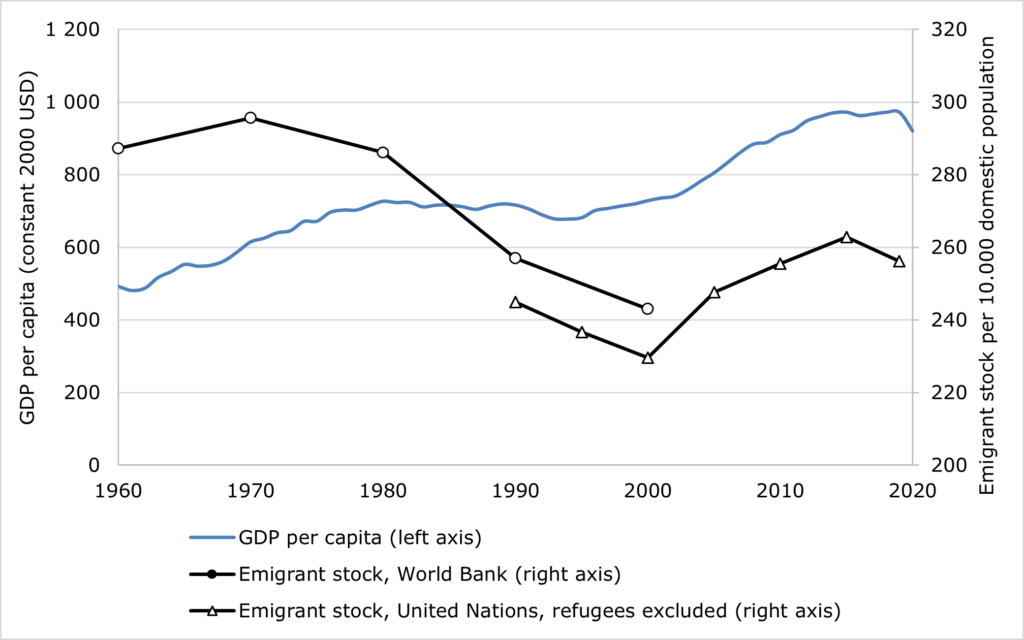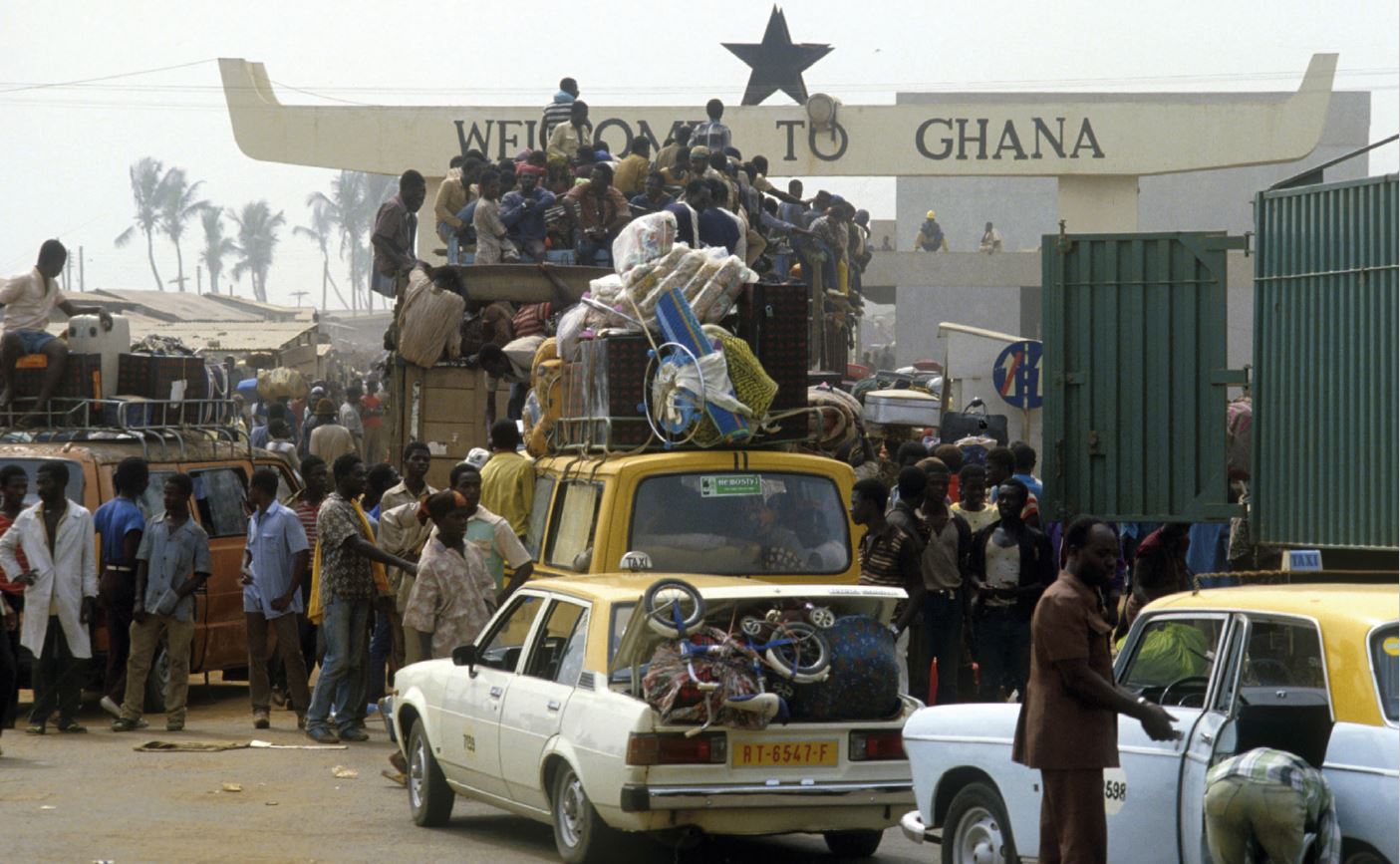Africans on the global migration scene: past and present
African migration figures prominently in global headlines, and often not in a positive light. The massacre in the Spanish enclave of Melilla in North Africa on June 24, 2022, is only one catastrophe in a long list of fatal attempts to cross into Europe. Large numbers of African migrants also work in Qatar and other Gulf countries, under conditions that came under heavy international scrutiny in the context of the 2022 FIFA World Cup. Meanwhile, growing attention is paid the long-lasting legacies of historical forced migration of enslaved Africans overseas, especially across the Atlantic from the 16th to 19th centuries.
Two commonalities underpin these, otherwise clearly distinct, cases of past and present African mobility: their extra-continental character, and the degree of suffering and enduring global inequality they signify. However, other types of African migration which have been even more central to the lives of most Africans, and have left major imprints on the continent itself, have received much less attention. This book (online open access) contributes to setting this record straight by zooming in on intra-African mobility patterns during the century from c.1850 to c.1960, and by connecting the “age of intra-African migration” to the decline of the external slave trades and post-colonial global migrations.
Until the 1820s, Africans dominated Atlantic migration. For every European, four to five enslaved Africans disembarked in the Americas. But in the next decades, African migration out of the continent dwindled to small numbers. Only in the 1960s, following decolonization, did African migration out of the continent begin a sustained comeback. By this time African migrants typically moved of their own volition. North Africans led the way, but migration from below the Sahara also increased steadily, many moving to the former European metropoles, but increasingly also to North America and the Gulf region (Lucas 2015). Today, according to UN estimates, some fifty percent of all African international migrants reside outside the continent, and some 30 percent of sub-Saharan international migrants. But how did African migration patterns evolve in the intervening period?
In the volume’s introduction, we critique the remarkably widespread and persistent idea that intra-African migration underwent a rather abrupt transition from ‘traditional’ forms of mobility, such as pastoral movement or the reproduction of communities along internal frontiers (Kopytoff 1987), to ‘modern’ migrations involving uprooted individuals whose livelihoods were disrupted by capitalism and colonialism (Amin 1974, 1995). We are not the first to challenge this viewpoint (see Manchuelle 1997), but our book provides new cases and draws across pre-colonial, colonial, and post-colonial eras to demonstrate that a more layered perspective on evolving patterns of intra-African migration is warranted. We also argue that intra-African migration was a constituent part of the global “age of mass-migration” (Hatton and Williamson 1998; McKeown 2004).
Precolonial migration ≠ ‘traditional’ migration
Part One of the book discusses what happened when African migration turned inwards in the second half of the 19th century. As the oceanic trades were abolished and ‘legitimate trade’ in cloves, cotton, groundnuts, ivory and palm oil took off, new migrations emerged from a starkly growing demand for slave labor within West, North and East Africa. In West Africa widespread slave-raiding and violent processes of pre-colonial state formation made voluntary frontier migration exceedingly unlikely. The cotton fields of Egypt, and the clove plantations of Zanzibar pulled in growing numbers of forced migrants from their central African hinterlands.
The Second Part of the book further addresses dynamism in 19th century migration. In Southern Africa, the intrusion of white settlers as well as disruptive processes of African and settler state formation caused large groups of people, as settlers, invaders or refugees, to migrate northwards. In East Africa, voluntary migration was about more than roaming pastoralists and expanding agriculturalists. Instead, individuals often migrated in and out of pastoral livelihoods, seeking shelter with farmers in times of need, such as climate shocks. Pastoral mobility was driven by commercial opportunity, generated by the ivory trade, for example, as much as the ‘traditional’ imperatives of herd management. Migration did not take on ‘traditional forms’ in the century leading up to the colonial era, but was instead entwined with a major commercial transition across large parts of the continent.
20th century shifts in the drivers, nature and destination of migrants
Part Three analyses how colonial policies generated migration outcomes, highlighting differences across regions, colonizers, and time. In the early colonial era, force was widely deployed, both to move people or to prevent them from moving. For example, many people were recruited to work in mining sites, often for short periods and under poor conditions. As the colonial period wore on, circulatory migration patterns gave way to more stable labor forces, with South Africa as the most persistent exception. While the Portuguese were the least apologetic and the most ambitious in their sustained attempts to control labor mobility, labor control policies were prevalent across all of colonial Africa, especially before the Forced Labor Convention of 1930.
Part Four discusses two major destinations of migrants in 20th century Africa: rural areas and cities. While expatriate-run mining sites dominated migration patterns in Southern and Central Africa before 1960, in West and East Africa most migrants converged upon cash-crop producing zones (Figure 1). The majority of such migrants ended up working on African-run farms, not expatriate-run plantations. While ‘cash-crop migration’ was initially circulatory, over time large numbers of migrants settled, transforming the demography, economy and society of both sending and receiving regions.
Figure 1: Selected major cash-crop migration systems in West and East Africa

In the second half of the 20th century cities began to grow rapidly. As was the case with rural destinations, urban migration initially had a temporary nature, but consolidated into more permanent settlement. In recent years however, migration has become a less important driver of urbanization, which is now increasingly driven by natural urban increase caused by a comparatively young urban demographic.
The Fifth Part of the book addresses the impact of conflict on migration in the 20th century. Both World Wars had considerable impact on mobility across the continent, and saw the recruitment of African soldiers for European and Asian campaigns. The global character of the latter migrations signified only a brief interruptions of the “age of intra-African migration”, however. Post-independence, a fundamental change took place in how migrants, both labor migrants and refugees, were treated in African receiving societies. Wanted for their productive and reproductive capacities in pre-colonial and colonial times, migrants were increasingly considered unwanted, resulting in a long string of expulsions, sometimes involving millions of people, as well as refugee streams, which peaked in the 1980-1990s and again today.
Migration transition theory
The final part of the volume brings the analysis up to the present. In a brief epilogue, we reflect on the implications of the historical analysis for how we view the effect of development on migration today. Migration transition theory predicts that emigration rates from low-income countries rise with growing welfare levels. The central idea is that welfare growth raises both the abilities and aspirations of people to leave their home in search of better work and living opportunities (Hein de Haas 2010). We conclude that there is no clear positive correlation between overall migration rates and ‘development’ since 1960 (of course absolute numbers of migrants have grown sharply, as a result of overall population growth) (Figure 2).
Figure 2: GDP per Capita and total Emigrant stock in Africa, 1960-2020. Sources

Sources: GDP and population data from the World Bank (https://databank.worldbank.org/source/world-development-indicators). Emigrant stock from the World Bank (https://databank.worldbank.org/source/global-bilateral-migration) and the UN (https://www.un.org/en/development/desa/population/migration/data/ estimates2/estimates19.asp). Refugee stock from the UNHCR (https://www.unhcr.org/data.html). Accessed 15-09-2021.
What we do observe, instead, is a shift in the destinations of migrants over the 20th and early 21st century: from rural to urban migration within Africa, to then increasingly global in orientation. We explain these shifts by pointing at closing spatial opportunity gaps within Africa, which make regional migration less lucrative, and cause migrants to look elsewhere for opportunity. This is combined with the emergence of new opportunities elsewhere, first in Europe, and later in North America and the Gulf region. In addition, more distant destinations have become more accessible due to technological change (cheaper transportation and better communication technologies) and migrants’ growing capabilities. Importantly, the scale of African migration remains modest today. Many more aspire to move out of the continent. However, given anti-migrant sentiments and restrictive policies across the world, we do not expect a second, Africa-focused “age of mass migration”.
References
Amin, Samir. 1974. “Introduction.” In Modern Migrations in Western Africa, edited by Samir Amin, 3–126. London: Oxford University Press.
Amin, Samir. 1995. “Migrations in Contemporary Africa: A Retrospective View.” In The Migration Experience in Africa, edited by Jonathan Baker and Tade Akin Aina, 29–40. Uppsala: Nordiska Afrikainstitutet.
De Haas, Hein. 2010. “Migration and Development: A Theoretical Perspective.” International Migration Review 44(1): 227–64
Hatton, Timothy, and Jeffrey Williamson. 1998. The Age of Mass Migration: Causes and Economic Impact. Oxford: Oxford University Press.
Kopytof, Igor. 1987. “The Internal African Frontier: The Making of African Political Culture.” In The African Frontier: The Reproduction of Traditional African Societies, edited by Igor Kopytof, 3–84. Bloomington: Indiana University Press.
Lucas, Robert. 2015. “African Migration.” In Handbook of the Economics of International Migration, Volume 1B, edited by Barry Chiswick, and Paul Miller, 1445–1596. Amsterdam: Elsevier.
Manchuelle, François. 1997. Willing Migrants: Soninke Labor Diasporas, 1848–1960. Athens: Ohio University Press.
McKeown, A., 2004. “Global Migration, 1846-1940.” Journal of World History 15(2): 155-189.
Featured image: Migrants crossing into Ghana from Benin, after having been expelled from Nigeria in 1983 or 1985. Over 2 million immigrants from neighbouring countries were expelled at the time, primarily Ghanaians. Photo by Michel Setboum/Getty Images.
